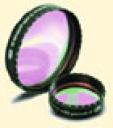We had guests over last night so I played the host and BBQ master, which required me to leave my scope indoors. I can’t complain, we had a good evening.

After a scorching afternoon today with temperatures approaching 30°C the clouds rolled in and the forecast suggested rain by the morning. Another evening lost, but also a chance to take a look at the 1004x and see why it didn’t work the other night.
I lifted the lid on the camera and removed the 1.25″ eyepiece adapter to release the camera board from the housing. There’s only one wire soldered to this board which is variable boost as documented elsewhere on this site. This yellow wire connects to a switch then through a variable resister and fixed resister to ground. I checked the solder joint by picking at it with a pointy probe. No movement detected. I then inspected the connector I use to link the yellow wire to the wire which comes from the switch, again everything looked ok.

I powered up the camera, linked it to K3CCDTools and got the same image I had the other night. Covering the CCD causes the light areas to darken so it looks like something is going on. A quick check with the multimeter confirmed 12v at the power connector, so the issue is on the board rather than with the connections. I use the same frame grabber with my ICE camera so I know that’s ok.
I powered off and set about reconnecting the board to the case using the eyepiece adapter. I now noticed the camera board was very hot to touch, not just the lens holder which acts as a heat sink, but the whole board. I think I just found my problem. Now I reconnected the power while watching the output on the screen, the image appeared normal for a split second then returned to a smudgy blur.
So it seems like the camera is unusable. There’s been a thread on QCUIAG lately regarding peltier coolers, I wonder if the camera would work if I could keep the temperature down. Seems like another project has just taken shape ![]()
———
I’ve also ordered a Baader UV/IR Blocking filter from Rother Valley Optics which should arrive early next week. I chose RVO as there was no delivery charge and the item was the same price as most other outlets.
I’m hoping this filter will help with planetary detail although it seems my original reason for wanting it, to reduce star bloat, is not an issue with a Newtonian scope. 
Star bloat occurs when lenses cannot focus all frequencies (colours) of light to a single point with IR being the main cause of this. Mirrors, as in the Newtonian scope, are able to focus all frequencies to a single point and therefore are not prone to “bloat”. I’ve been advised that an IR filter will however help me to capture more realistic colours and will certainly help if I put it onto the guidescope. Although this again is a contentious issue with some people preferring a bloated star to guide on as it’s easier to track.